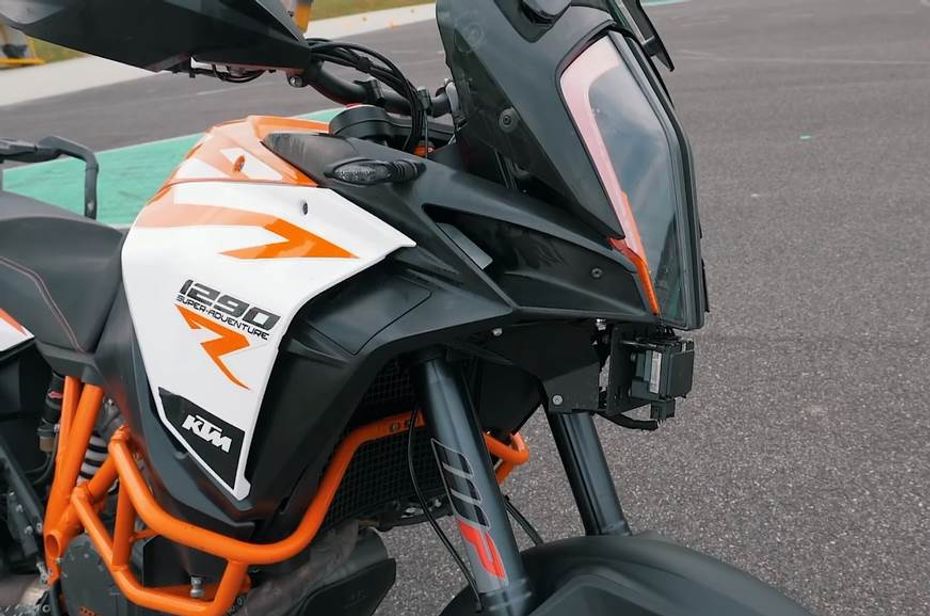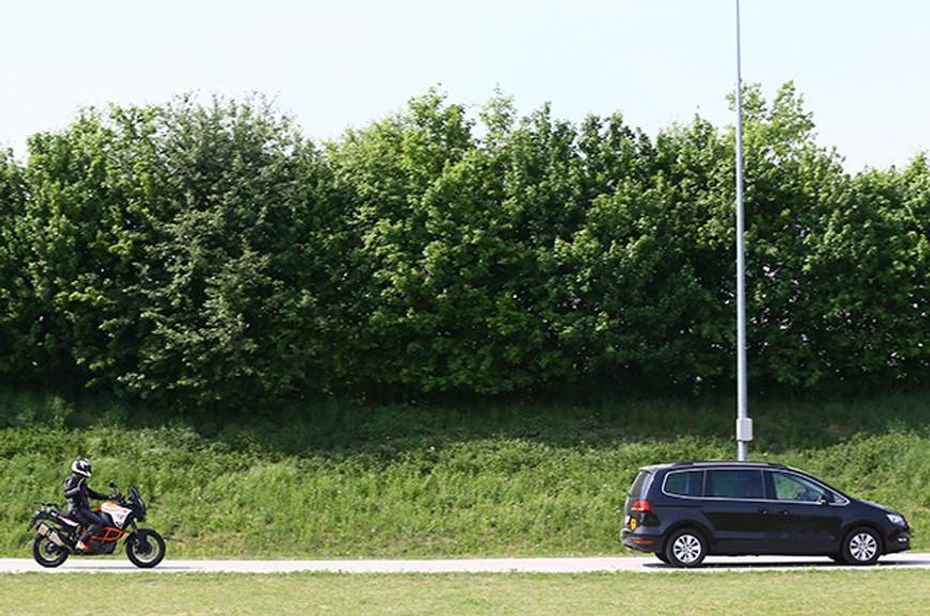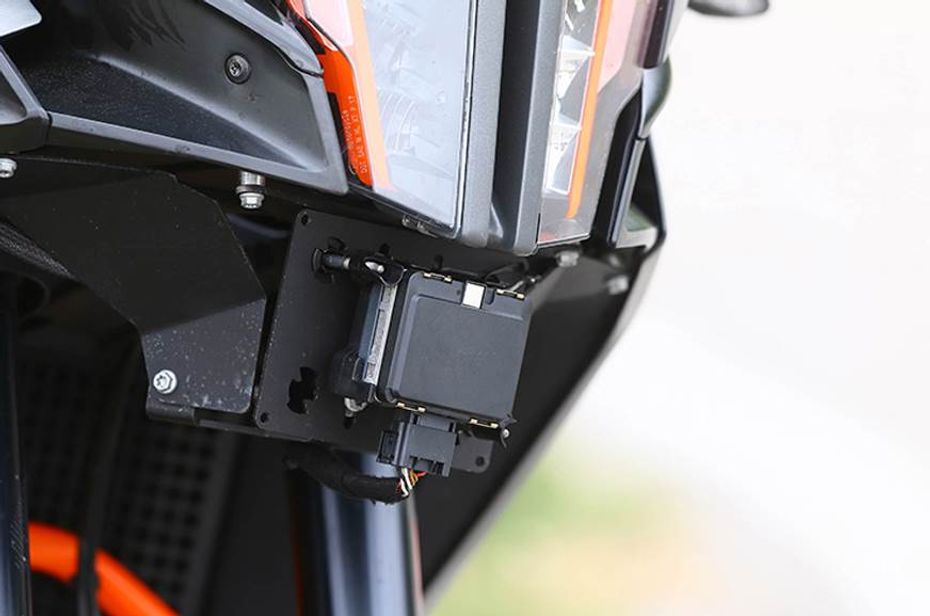
The 2025 Ather 450 Put Through An Insane Track Attack Challenge...
- Jan 4, 2025
- Views : 85394


While cars have had the technology for some time now, we’re only just about to start seeing adaptive cruise control make its way onto motorcycles. KTM has been developing the technology for its next 1290 Super Adventure, and Kawasaki also hopes to be the first Japanese manufacturer to offer adaptive cruise control sometime soon. So what exactly is the technology and how does it work? We dive in and take a closer look.

Cruise Control 101
A simple cruise control system allows you to hold a particular road speed without any throttle input. This means you can press the button to activate cruise control and then take your right hand off the twist grip, and the motorcycle will continue to hold whatever speed it is doing. This can be done on bikes equipped with ride-by-wire technology, by simply holding the butterfly valve in the throttle body slightly open, to mimic the rider holding the throttle slightly open.
More advanced systems like the one seen on the BMW K 1600 GTL even allow you to change the set speed by using buttons on the left handlebar. So, for example, if you’ve set cruise control to 60kph on a dual carriageway and then find that the road opens up to a multi-lane highway, you can use the buttons on the left switch cluster to up the set speed to 80kph.
Adaptive Cruise Control
Adaptive cruise control takes things a step further, by allowing you to latch onto the vehicle in front. Radar sensors on the front of the motorcycle can detect the presence of objects in front and even gauge their distance. The radar unit comprises of a transmitter and a receiver. The transmitter sends out radio waves, which are then reflected back by objects ahead and picked up by the receiver. The unit can use these reflected waves to decipher the size and distance of the objects in front of the motorcycle.
So if you are cruising on the highway with a car a certain distance in front of you, the radar sensor can pick this up. If you then activate adaptive cruise control, the ECU can use the data from the radar sensor to maintain the exact same distance to the car in front. If the car ahead accelerates, the radar sensor will detect this and inform the ECU, which will in turn increase throttle opening and help you catch up to the car. The same applies for deceleration - if the car brakes, the radar unit informs the ECU, which then applies the brakes on the motorcycle as well.

The rider can set the distance at which he is comfortable following the vehicle in front, and the bike will handle the rest. Cars with more advanced systems even allow you to modify this following distance on the fly, letting you close up on the car in front as speeds drop or pull further behind as speeds rise. In theory, it shouldn't be too difficult to transfer this capability onto motorcycles as well.
Okay, But Why?
On long journeys, especially those where you’re travelling in a group with other bikes or cars, one can simply latch onto one of the other vehicles and follow them the whole way without having to modulate speed manually. This results in a very relaxed and stress-free riding experience which makes long journeys that much more enjoyable. Or for example, if you’re feeling a little spent after a long day of riding and you happen to come across a bus going to the same destination as you, adaptive cruise control can simply latch onto said bus and follow it home. It’s no surprise that KTM is testing the technology on its Super Adventure, since this is an adventure tourer designed to cross continents without breaking a sweat. Exactly the sort of long-distance bike on which adaptive cruise control would be most useful.

Even In India?
Unfortunately our highways are quite chaotic even at the best of times, perilous at others. Making use of a conventional cruise control system is quite a challenge in India, and trying to use an adaptive cruise control system would be near impossible. The concept of following distances is almost non-existent in our country, and the gap created by the following distance will almost certainly be swiftly filled by another vehicle. At this point, the adaptive cruise control system will then decelerate the motorcycle and drop you back in order to maintain the desired distance to the vehicle in front. This will create another gap, which will again be quickly filled up by another motorist, and the whole cycle will repeat again. So while adaptive cruise control systems are a luxury on long rides in countries with well-mannered motorists, their potential could remain unfulfilled until we Indians inculcate a little more road discipline.
P.S. - We strongly recommend keeping both hands on the handlebars even when cruise control is activated.

The 2025 Ather 450 Put Through An Insane Track Attack Challenge...

2025 Ather 450 Incoming: Here’s What It Could Be Capable Of

TVS Apache RTX 300 Adventure Bike Unveiled At Auto Expo 2025

BREAKING: 2025 Honda SP125 Launched In India

2025 Bajaj Pulsar RS200; Launch In Next Few Days

2025 Suzuki Access 125 Launched At Auto Expo 2025

New Bajaj Pulsar Teased; Launch Likely In January 2025

Upcoming 2025 Bajaj Pulsar RS200 Teased Again

TVS Jupiter CNG Scooter Unveiled At Auto Expo 2025
India's largest automotive community
 Honda Livo
Rs. 83,080
Honda Livo
Rs. 83,080
 BMW R 1300 GS Adventure
Rs. 22.95 Lakh
BMW R 1300 GS Adventure
Rs. 22.95 Lakh
 BMW S 1000 RR
Rs. 21.10 Lakh
BMW S 1000 RR
Rs. 21.10 Lakh
 Suzuki Gixxer SF 250 Flex Fuel
Rs. 2.16 Lakh
Suzuki Gixxer SF 250 Flex Fuel
Rs. 2.16 Lakh
 Hero XPulse 210
Rs. 1.75 Lakh
Hero XPulse 210
Rs. 1.75 Lakh